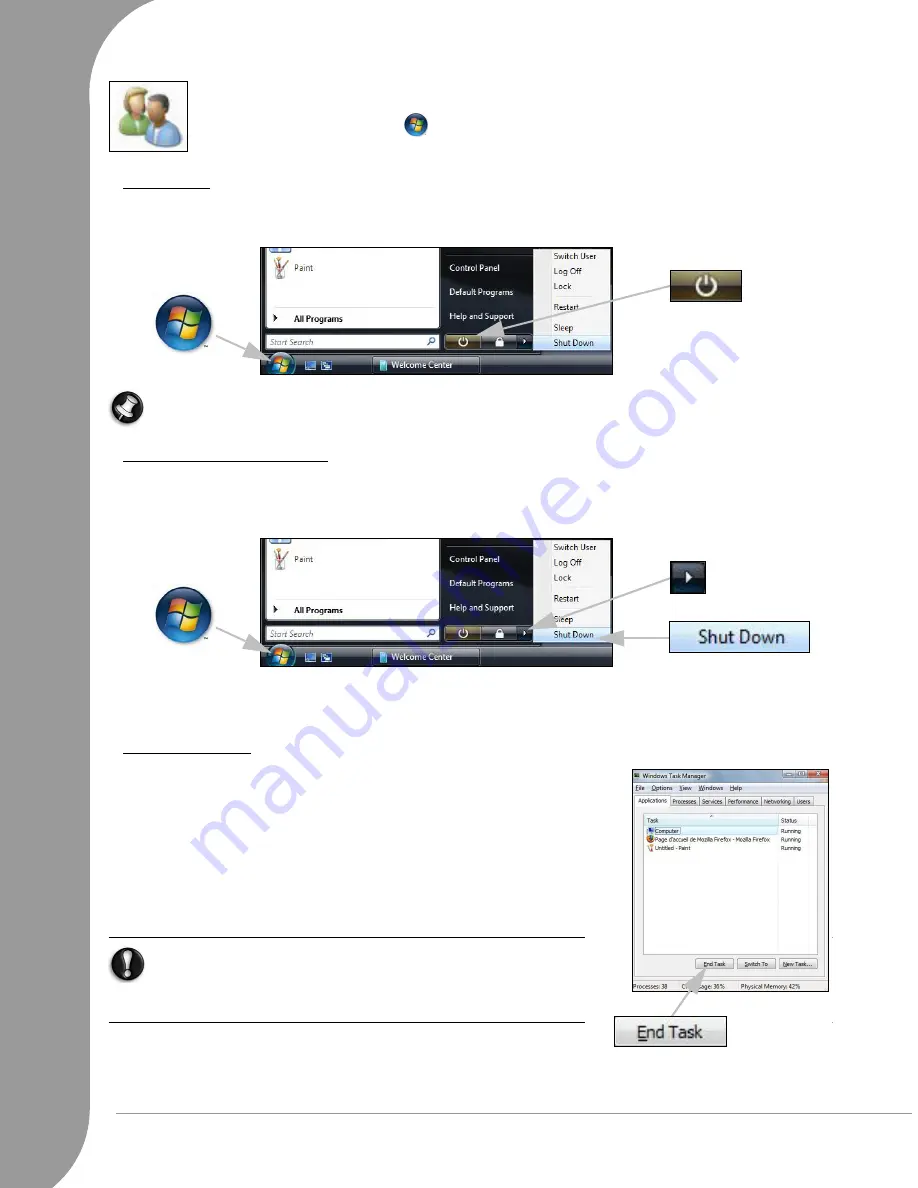
12 -
Quick Start & Troubleshooting Guide
To share the family computer and have your own system settings every time you turn on the
computer, you can set up accounts for each user. You can access and modify your accounts at
any time by clicking on ‘Start’
> Control Panel > User Accounts. To learn more about user
account management, please see the section
User Account Control
on page 37.
Sleep mode
Click on the Sleep button to save your session and put the computer in a low-power state so that you may
quickly resume working (see the
Power Options
section on page 13 for details).
Note: You may also put your computer into sleep mode without going to the Windows Start menu.
Simply close all your applications and press the power button.
Turning your Computer OFF
Make sure all applications are closed before you turn off your computer. Turning off your computer will
ensure that a data is saved and it will use as little power as possible (there may be a small power drain to
charge batteries), however your computer will take longer to start.
Once the computer has shut down, switch OFF all external devices (such as a monitor) if they have a power
button.
Forced Shutdown
If your computer doesn’t respond, then try using the
Task Manager
.
This utility provides information about your system’s performance
and displays details about programs and processes running on your
computer.
To do so, press the [Ctrl]+[Alt]+[Del] keys simultaneously and select
Start Task Manager in the pop up menu.
Click on the Applications tab, select the task that you want to end
and click on End Task.
Warning:
If your computer still does not respond, press the
computer power button to turn your computer off. Keep this
button pressed until all of the LEDs turn off and wait for roughly
30 seconds before turning the computer on again.
➊
➋
➊
➌
➋



























